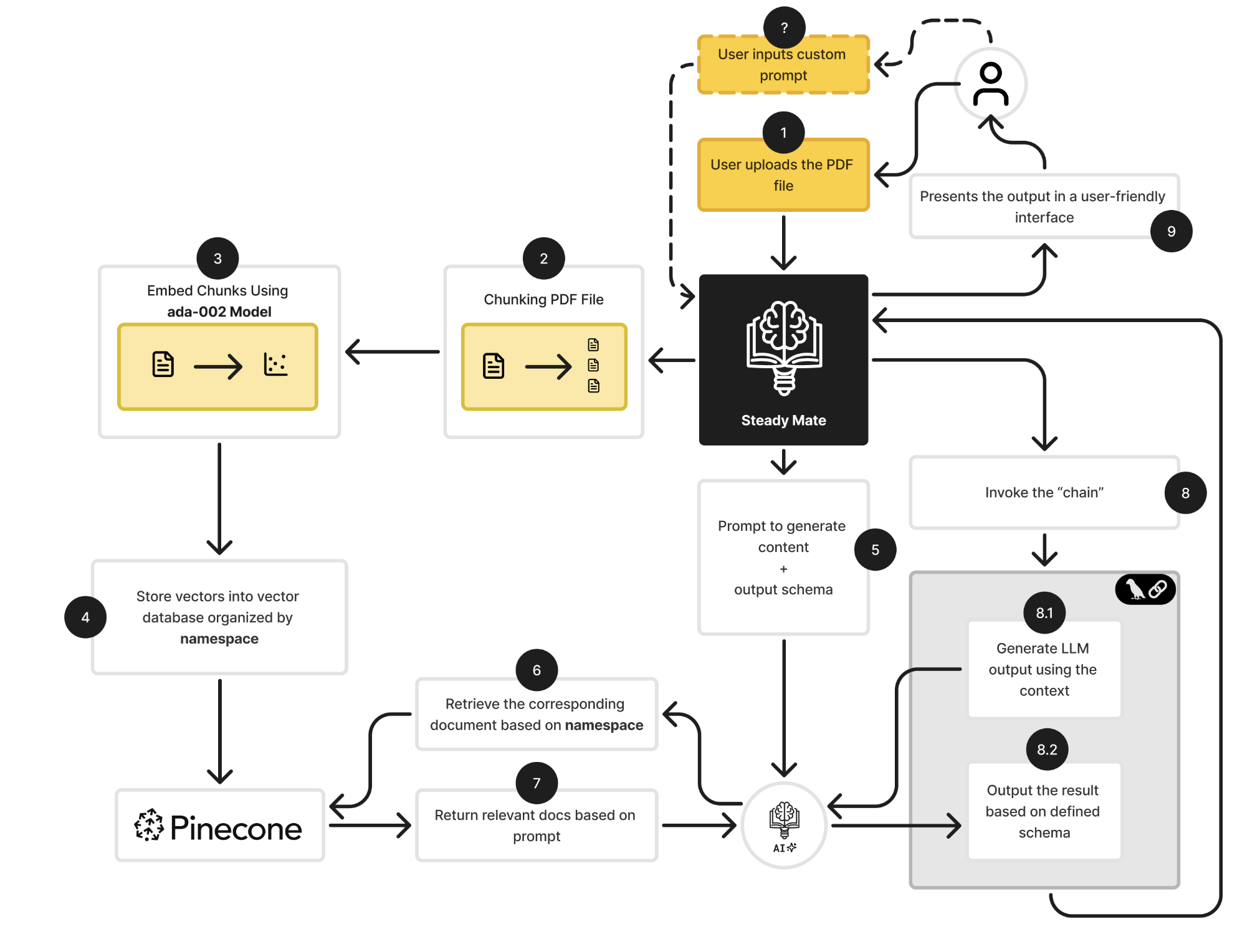A Final Year Project: Steady Mate, AI Study Companion for ADHD Students
Credit to Elvin who helped me to create the slide.
Motivation
ADHD is a common but often misunderstood condition that affects students’ ability to focus, plan, and retain information. Many academic tools fail to accommodate these challenges, resulting in underperformance and frustration. Steady Mate was designed as an AI-based assistive platform to address these gaps — providing personalized, flexible, and ADHD-aware study support.
What Steady Mate Offers
Steady Mate is more than a study tool — it’s a multi-modal learning companion tailored for neurodiverse students. It supports multiple learning styles and executive functioning needs:
Core Features
- AI Course Generator: Creates structured learning paths based on user input, complete with key points, difficulty levels, and video-enhanced subtopics.
- Smart Assistant: Accepts documents and transforms them into summaries, quizzes, flashcards, and mind maps — all available via a conversational UI.
- Audio Assistant: Includes both speech-to-text (lecture capture, summarization) and text-to-speech (natural narration) to support different content access modes.
- Task Manager: Lets users add tasks with energy level, time estimates, and deadlines, then generates dynamic study plans based on focus levels and priority.
- Pomodoro Focus Timer: Customizable interval timer with gamified elements and motivational prompts to reinforce good study habits.
- Dashboard: Visualizes user progress — including focus hours, task completion, and daily consistency — to help track momentum.
- Chatbot: Uses embedded user data to provide targeted advice, encouragement, and productivity feedback based on learning patterns.
- Utilities: Includes a note enhancer (“Tidy Up”), generate-speech tool, and customizable AI model selector.
How It Aligns With ADHD Profiles
| ADHD Symptom / Challenge | Feature Response |
|---|---|
| Inattention | Pomodoro timer, summarized videos, flashcards |
| Hyperactivity | Interactive content (quizzes, mind maps) |
| Impulsivity | Smart planning via task order suggestions |
| Anxiety / Motivation dips | Chatbot encouragement + progress tracking |
| Working memory overload | Flashcards, summaries, and spaced repetition |
| Preference for non-linear thinking | Mind maps, modular learning path UI |
Each feature maps directly to real executive functioning difficulties ADHD students experience.
Technical Architecture Overview
Built with modern full-stack tooling:
- Frontend: Next.js, Tailwind CSS, shadcn/ui, tRPC, TypeScript
- Backend: tRPC routers, Prisma ORM
- Database: PostgreSQL (via Supabase)
- AI Models: GPT-4o, Deepseek R1, Claude 3.5 Haiku, Gemini 2 Flash, Perplexity Sonar
- Vector DB: Pinecone (for document embedding and retrieval)
- Speech: OpenAI Whisper (speech-to-text), TTS-1 for narration
- Deployment: Vercel (serverless, CI/CD)

RAG Flow (Retrieval-Augmented Generation)
One of Steady Mate’s most powerful capabilities is the ability to understand and reason over user-uploaded PDFs using RAG — Retrieval-Augmented Generation. This allows the system to provide personalized outputs like summaries, quizzes, or flashcards grounded in the user’s actual content.
Here’s how the flow works:
-
User Uploads PDF
The user provides a learning document (e.g. lecture notes or slides). -
Chunking
The PDF is broken into manageable text segments using a custom chunking logic optimized for paragraph coherence. -
Embedding
Each chunk is transformed into a vector representation using OpenAI’stext-embedding-ada-002model. -
Storage in Pinecone
These vector embeddings are stored in Pinecone, organized by a unique namespace that maps to the user and document. -
User Prompt + Schema
The user can ask a question (e.g. “Summarize this in bullet points”) or trigger preset actions like “generate quiz”. The prompt is combined with a task-specific output schema. -
Context Retrieval
Pinecone is queried using the prompt to fetch the most relevant chunks from the document — ensuring the LLM has context grounded in the actual PDF. -
Vector DB Responds with the Context Pinecone gives back the relevant knowledge
-
LLM Chain Execution
The system invokes a chain (via LangChain or equivalent orchestration), passing both the retrieved context and prompt to an LLM.- 8.1: The model generates a response using the retrieved content.
- 8.2: The output is formatted according to the schema (e.g. list of flashcards, JSON for quiz).
-
Output Presentation
The result is shown in the frontend via a friendly, structured UI component.
This flow help the AI to respond with answers based on the user’s own materials, which makes it personalized.

User Survey Insights
To validate our design and better understand the needs of students with ADHD, we conducted an “informal” survey during the development of Steady Mate.
Key Findings
- Top 3 Study Challenges:
- Staying focused — 62.5%
- Organizing tasks — 56.3%
- Retaining information — 56.3%
These results aligned closely with the executive function difficulties commonly experienced by ADHD students and directly informed the development of our Pomodoro timer, task planner, and memory-aiding tools like flashcards and summaries.
Qualitative Feedback
- Users appreciated the centralization of tools in one platform.
- Many liked the simplified interaction model and the ability to switch between modalities (text, audio, visual).
- Some noted that the personalized learning flow and AI summarization were particularly helpful for reducing overload when tackling new materials.
Overall Satisfaction
Average user rating: 4.06 / 5
“Feels like the platform understands how I work.”
“Having flashcards + mind maps + to-do in one place is a game changer.”
This feedback confirmed that Steady Mate meaningfully supports the ADHD learning experience — not by doing more, but by doing what matters most with less friction.
Conclusion
Steady Mate shows that AI can transform education by making learning more inclusive and supportive for students.
With careful planning and research, it is possible to build targeted solution for diverse learning needs.